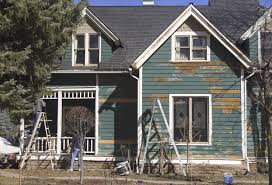Property rehabilitation, also known as property restoration or renovation, involves the process of repairing, updating, and improving a property to restore it to a desirable condition. Whether for residential or commercial properties, rehabilitation can transform a dilapidated structure into a valuable asset. This guide covers the comprehensive steps, benefits, and best practices for property rehabilitation, ensuring a successful restoration project.
What is Property Rehabilitation?
Property rehabilitation is the comprehensive process of making necessary repairs and improvements to a building to restore its functionality, aesthetics, and value. This can include structural repairs, updating systems like plumbing and electrical, enhancing energy efficiency, and improving the overall appearance and usability of the property.
Objectives of Property Rehabilitation
- Restoring Structural Integrity: Ensuring the building is safe and sound.
- Modernizing Systems: Updating outdated plumbing, electrical, and HVAC systems.
- Improving Aesthetics: Enhancing the visual appeal through cosmetic updates.
- Increasing Property Value: Raising the market value of the property.
- Ensuring Compliance: Meeting current building codes and regulations.
- Enhancing Energy Efficiency: Reducing energy consumption and costs through upgrades.
Benefits of Property Rehabilitation
Property rehabilitation offers numerous advantages:
- Increased Market Value: Well-executed renovations can significantly boost a property’s market value.
- Enhanced Safety and Comfort: Upgrades ensure the property is safe and comfortable for occupants.
- Energy Efficiency: Modern systems and materials can reduce energy consumption and costs.
- Preservation of Historical Properties: Rehabilitation can preserve the charm and historical significance of older buildings.
- Economic Benefits: Renovations can attract businesses or tenants, improving economic activity in the area.
Key Steps in Property Rehabilitation
1. Initial Assessment and Planning
The first step in property rehabilitation is a thorough assessment of the property’s current condition.
- Inspection: Conduct a detailed inspection to identify structural issues, system failures, and areas needing improvement.
- Evaluation: Assess the extent of the repairs and upgrades required.
- Planning: Develop a comprehensive plan outlining the scope of work, budget, timeline, and necessary permits.
2. Budgeting and Financing
Accurate budgeting is critical for a successful rehabilitation project.
- Cost Estimation: Obtain detailed cost estimates for all aspects of the project.
- Financing Options: Explore financing options such as loans, grants, or private funding.
- Contingency Fund: Set aside a contingency fund to cover unexpected expenses.
3. Obtaining Permits and Approvals
Depending on the scope of the project, various permits and approvals may be required.
- Building Permits: Necessary for structural changes, electrical work, plumbing, and other major renovations.
- Historical Preservation Approvals: Required for properties with historical or architectural significance.
- Zoning Approvals: Ensuring that the planned work complies with local zoning laws and regulations.
4. Hiring Contractors and Professionals
Choosing the right contractors and professionals is crucial.
- Licensed Contractors: Hire licensed and insured contractors with experience in property rehabilitation.
- Architects and Designers: Consult with architects and designers for major structural changes and aesthetic improvements.
- Specialized Professionals: Depending on the project’s scope, you may need specialists such as structural engineers, electricians, and plumbers.
5. Execution of Rehabilitation Plan
With a clear plan, budget, and permits in place, the execution phase begins.
- Demolition and Preparation: Remove old or damaged structures, fixtures, and materials.
- Structural Repairs: Address any structural issues such as foundation repairs, roofing, and framing.
- System Upgrades: Upgrade electrical, plumbing, HVAC, and other essential systems.
- Cosmetic Improvements: Focus on aesthetics, including painting, flooring, cabinetry, and fixtures.
- Energy Efficiency Enhancements: Install energy-efficient windows, insulation, and appliances.
6. Inspection and Finalization
Upon completion, a thorough inspection ensures all work meets safety standards and project specifications.
- Final Inspection: Conduct a final walkthrough with inspectors and contractors.
- Punch List: Address any remaining issues or touch-ups identified during the final inspection.
- Certification of Completion: Obtain necessary certifications confirming that the rehabilitation is complete and compliant.
Best Practices for Property Rehabilitation
1. Prioritize Safety and Code Compliance
Ensure all work complies with local building codes and safety standards. This includes obtaining necessary permits and conducting inspections at each phase.
2. Maintain Historical Integrity
For historical properties, prioritize preservation of original features and materials. Consult with preservation specialists to ensure that renovations respect the property’s historical significance.
3. Focus on Energy Efficiency
Incorporate energy-efficient upgrades to reduce long-term utility costs and environmental impact. This can include installing energy-efficient windows, insulation, HVAC systems, and appliances.
4. Plan for Future Maintenance
Consider future maintenance needs during the rehabilitation process. Use durable materials and finishes that will withstand wear and tear and minimize future upkeep costs.
5. Communicate with Stakeholders
Maintain open communication with contractors, inspectors, and stakeholders throughout the project. Regular updates and clear expectations help ensure that the project stays on track and within budget.
6. Use of Technology
Leverage technology, such as Geographic Information Systems (GIS), remote sensing, and precision tools, to enhance land management efforts. These technologies can provide valuable data and insights for informed decision-making.
Conclusion
Property rehabilitation is a multifaceted process that requires careful planning, budgeting, and execution. By following best practices and focusing on key steps such as assessment, budgeting, obtaining permits, hiring qualified professionals, and executing the plan, property owners can successfully restore and enhance their properties. Effective property rehabilitation not only improves the functionality and value of the property but also contributes to community revitalization, historical preservation, and environmental sustainability. Whether you are renovating a residential home, a commercial building, or a historical structure, the principles and practices outlined in this guide will help ensure a successful and rewarding rehabilitation project.








